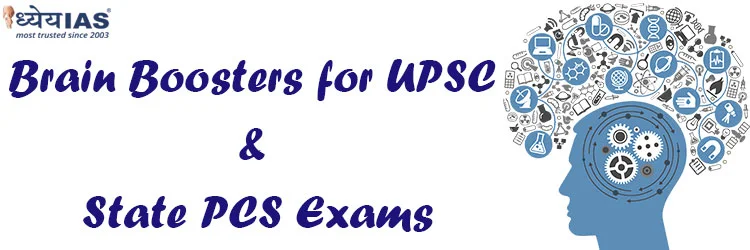Current Affairs Brain Booster for UPSC & State PCS Examination
Topic: Prevalence of Anaemia in India

Why in News?
- Indian women and children are overwhelmingly anaemic, according to the National Family Health Survey 2019-20 released in December 2020, and the condition is the most prevalent in the Himalayan cold desert.
- Anaemia testing during the survey was done among children aged 6 to 59 months and among women and men aged 15 to 49 years of age. In a majority of these states and UTs, more than half the children and women were found to be anaemic.
Alarming Anaemia
- Across the 22 States/Union Territories, anaemia prevalence among children increased by about eight percentage points from 51.8% to 60.2%.
- The prevalence of anaemia in childhood increased in 18 of the 22 States/Union Territories.
- In the majority of the States, two out of three children have possible iron-deficiency.
- The State-wise trends for adults are mixed, although it is clear that women are substantially at a far greater risk for anaemia than men.
- The Prime Minister’s Overarching Scheme for Holistic Nutrition (POSHAN) Abhiyaan and, particularly, the Anaemia Mukt Bharat, or AMB, Strategy was launched in 2018 with efforts to improve Iron and Folic Acid (IFA) supplementation, behaviour change and anaemia-related care and treatment across six target groups including pregnant women, lactating mothers, and children, and the provisional verdict is mixed for women and concerning for children.
Causes of Prevalent Anaemia
- Iron-deficiency and vitamin B12-deficiency anaemia are the two common types of anaemia in India.
- Among women, iron deficiency prevalence is higher than men due to menstrual iron losses and the high iron demands of a growing foetus during pregnancies.
- Lack of millets in the diet due to overdependence on rice and wheat, insufficient consumption of green and leafy vegetables.
- Dominance of packaged and processed foods which are low in
- Food habits have changed and variation in cereals and natural food items has reduced.
- There could be genetic or environmental factors, but such a study has never been conducted. Also, the current haemoglobin norms are based on western populations. In India, the normal standards could be different. There are women whose haemoglobin drops to six or eight sometimes but they remain healthy and well.
Critical Case of Cold Deserts
- In the union territory of Ladakh, whopping 92.5 per cent children, 92.8 per cent women and around 76 per cent men are anaemic in the given age groups.
- In Lahaul and Spiti district which lies in Himachal Pradesh, 91 per cent children and 82 per cent women are anaemic.
- Both these areas are part of the Himalayan cold desert.
- In J&K and in rest of Himachal, the prevalence of anaemia is comparatively lower.
- Possible causes:
- Short supply of fresh vegetables and fruits during the long winter each year.
- Crops here are generally only grown in summer and during winter
- Residents fail to get a regular supply of green vegetables and fresh produce from outside, as connectivity becomes restricted due to harsh weather and snowbound roads.
- Other factors are yet to be scientifically ascertained.
Significance of NFHS Survey
- NFHS is a large-scale nationwide survey of representative households. The data is collected over multiple rounds. The MoHFW has designated International Institute for Population Sciences in Mumbai as the nodal agency and the survey is a collaborative effort of IIPS; ORC Macro, Maryland (US); and the East- West Center, Hawaii (US).
- The survey is funded by the United States Agency for International Development (USAID) with supplementary support from UNICEF.
- The NFHS database is possibly the most important one because it not only feeds into the research needs and informs advocacy but also is central to both central and state-level policymaking.
- NFHS survey results also provide internationally comparable results. That’s because the questions and the methodology is internationally valid.









